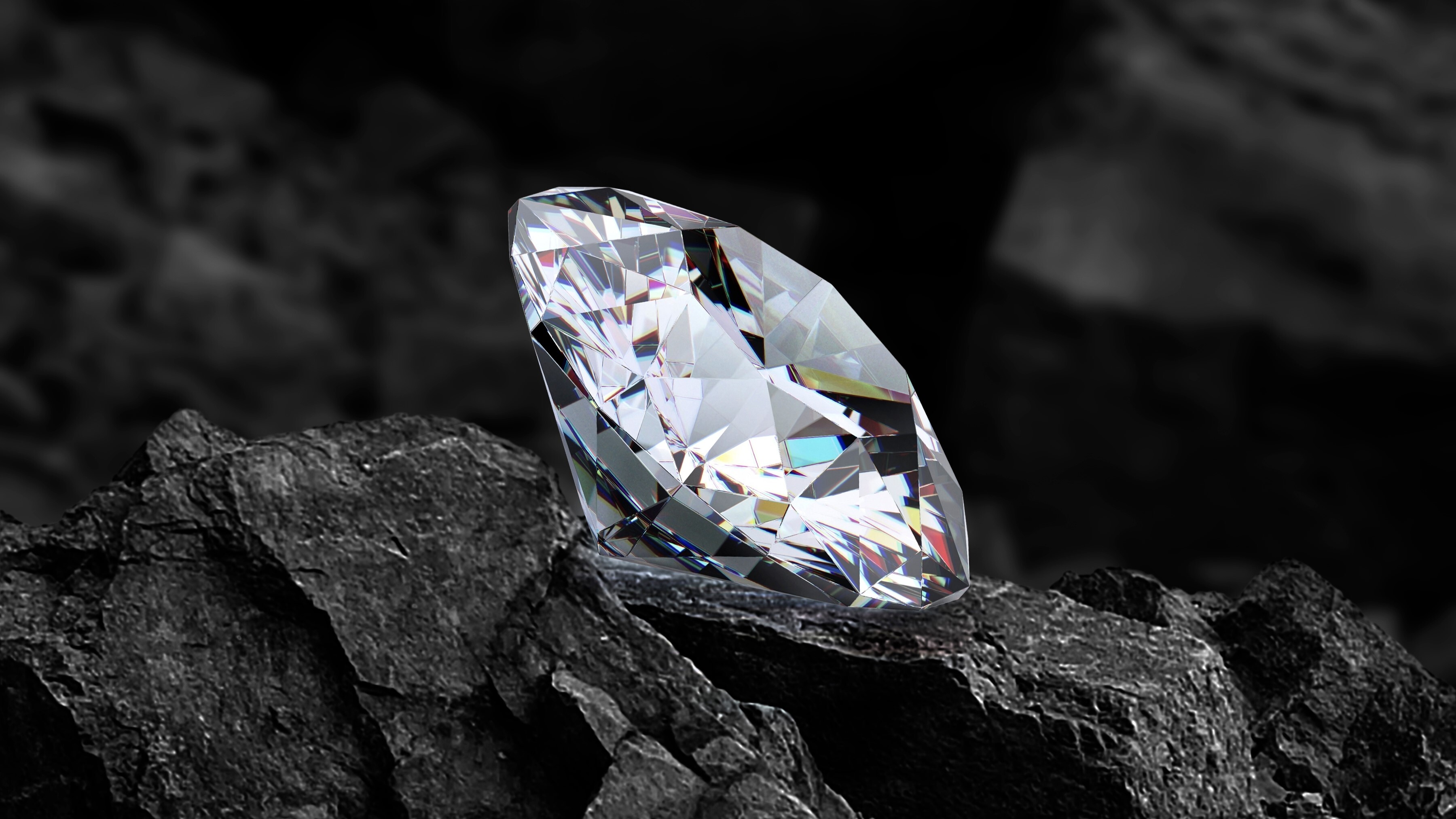Scientists develop the world’s first carbon-14 diamond battery, offering a 5,000-year lifespan — the device uses radioactive decay to generate low power levels
We won't need to replace this diamond battery in our lifetime.

A team of scientists and engineers from two British institutions built the world’s first carbon-14 diamond battery that has the potential to deliver low amounts of power for thousands of years. According to the University of Bristol, the battery uses carbon-14 encased in a manufactured diamond to generate power. The radioactive decay of carbon-14, more popularly known for its use in radiocarbon dating, releases electrons, which are then captured by the diamond’s structure to produce voltage. The concept behind the device is similar to that of solar cells, but it uses the electrons released by the carbon-14 isotope instead of photons to make electricity.
Carbon-14 has a half-life of 5,700 years, so a carbon-14 diamond battery could last just as long, if not longer. This makes it the perfect power source for devices where replacing batteries is inconvenient, impractical, or impossible. For example, they could power implants like pacemakers, reducing the need for the patient to visit their healthcare provider periodically to replace their battery.
💎Scientists and engineers from the UK Atomic Energy Authority (@UKAEAofficial) and the University of Bristol (@BristolUni) have successfully created the world’s first carbon-14 diamond battery.This new type of battery has the potential to power devices for thousands of years,… pic.twitter.com/Kquxpn1PHADecember 4, 2024
“Diamond batteries offer a safe, sustainable way to provide continuous microwatt levels of power. They are an emerging technology that use a manufactured diamond to safely encase small amounts of carbon-14,” said UK Atomic Energy Authority (UKAEA) Director of Tritium Fuel Cycle Sarah Clark.
It could also be used to power spacecraft like Voyager 1, which we launched in 1977 and is still sending data back to Earth in 2024. However, its power is expected to last only until 2036. However, if equipped with a carbon-14 diamond battery, the spaceship could communicate its findings back home for thousands of years.
“Our micropower technology can support a whole range of important applications from space technologies and security devices through to medical implants,” says Professor Tom Scott of the University of Bristol. “We’re excited to be able to explore all of these possibilities, working with partners in industry and research, over the next few years.
If the research team successfully brings this power source to market, it would be a game-changer. A carbon-14 diamond-powered device could mean we no longer have to consider battery replacements for the many devices we’re building, allowing us to install permanent electronics anywhere we want to.
Get Tom's Hardware's best news and in-depth reviews, straight to your inbox.

Jowi Morales is a tech enthusiast with years of experience working in the industry. He’s been writing with several tech publications since 2021, where he’s been interested in tech hardware and consumer electronics.
-
ThatMouse This sounds like cold fusion. Watched the whole thing and no one said how many watts they've achieved so far, and they are already talking about up-scaling and manufacturing.Reply -
A Stoner Reply
Microwatts. 0.000001 watt increments. You could power a tesla with these if you have 20 tons of them maybe!ThatMouse said:This sounds like cold fusion. Watched the whole thing and no one said how many watts they've achieved so far, and they are already talking about up-scaling and manufacturing. -
edzieba It's just a Beta Battery using a different isotope than the usual Tritium or Promethium.Reply -
King_V Reply
It absolutely is NOT like cold fusion.ThatMouse said:This sounds like cold fusion. Watched the whole thing and no one said how many watts they've achieved so far, and they are already talking about up-scaling and manufacturing. -
usertests A microwatt isn't a lot of power, and it's going to be even less when you scale it down to medical implant size.Reply -
AGuyNamedMikeSmith Reply
There's nothing cold-fusiony about this. Radioisotopes have been used for low-level long-term power generation for decades. Voyager 1 uses a Pu-238 RTG, for instance.ThatMouse said:This sounds like cold fusion. Watched the whole thing and no one said how many watts they've achieved so far, and they are already talking about up-scaling and manufacturing. -
tony-w Reply
One microwatt per battery - it's hard to imagine a huge number of applications for it. The carbon is sourced from used nuclear reactor graphite blocks. The diamond coating stops radiation escaping from the graphite but you definitely don't want to break one open.Admin said:A UK research team built carbon-14 diamond batteries that could potentially deliver power for thousands of years.
Scientists develop the world’s first carbon-14 diamond battery, offering a 5,000-year lifespan — the device uses radioactive decay to generate low... : Read more
One article I read says they ONLY cost around USD20 per NANOwatt so only $20,000 for a microwatt or 20 million for a milliwatt! A bargain if you are a billionaire. -
JTWrenn This sounds like interesting tech with very little application. This feels much more like the start of areas that could be useful with different C14 combinations with other materials to catch/interact better. Interesting but that power output to size is so low I don't see much in the way of use as a primary power source. I do wonder if it could be used in conjunction with other things as sort of a backup battery or unlimited clock battery or something though. Just those real low level things you don't want to lose power on as it could cause issues after a reboot of tech in deep space or on a remote camera or something.Reply -
Ss2024 Interesting. Diamond is also carbon. Coal is also carbon.Carbon-14 is producing energy very slowly like a burning coal. We are made and created from simple elements like carbon, nitrogen, and oxygen and hydrogen. What a wonderful universeReply -
Florida Man Reply
So, no more fire alarm chirp?Admin said:A UK research team built carbon-14 diamond batteries that could potentially deliver power for thousands of years.
Scientists develop the world’s first carbon-14 diamond battery, offering a 5,000-year lifespan — the device uses radioactive decay to generate low... : Read more